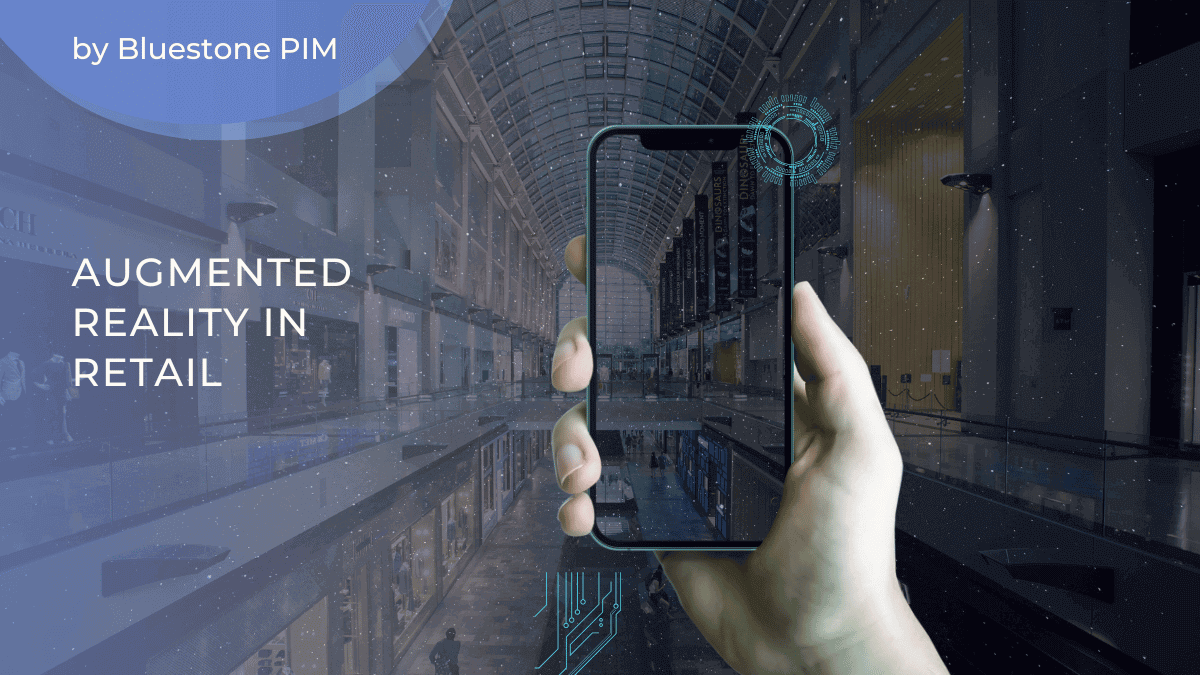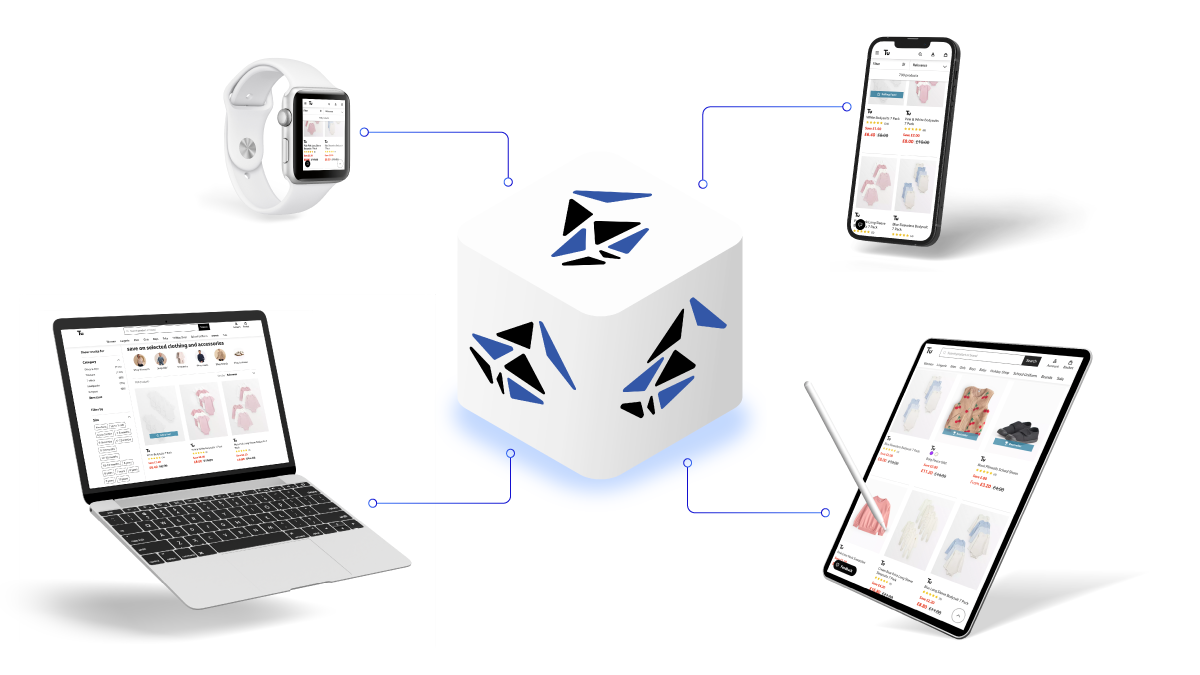Augmented Reality in Retail: Enhancing Product Info for Smarter Choice

Did you know that in eCommerce, up to 30% of products purchased online were returned because expectations were not met?
This fact alone underscores the urgent need for a solution that combines the convenience of virtual shopping with the tangibility of physical retail. This is where augmented reality (AR) can step in to bridge the gap and provide a seamless blend of both worlds!
Where online retail has become the norm, AR becomes a transformative force that blurs the lines between the physical and digital worlds. By overlaying virtual elements with the real world, AR enables consumers to have an immersive experience that revolutionizes how they interact with products and ultimately enhances the shopping experience.
In this blog post, we uncover the immense potential of AR in retail and explore how it is transforming eCommerce and opening the doors to a new era of excellence. Let's hop in!
Upsides of Using Augmented Reality in Retail
Augmented reality is one of the most revolutionary technological advancements in the retail industry. It allows for the superimposition of computer-generated elements onto a user's real-world perspective, creating a composite view that enhances the shopping experience. This advanced technology has the potential to completely transform the way we shop by providing a more immersive and interactive shopping environment.
As AR technology continues to evolve, businesses have the opportunity to leverage its capabilities to make shopping more convenient, efficient and enjoyable. There are several benefits that AR offers to retailers, including:
Improved Product Visualization
One of the key benefits of AR when shopping is the ability to better visualize products in a realistic and immersive way.
AR allows customers to superimpose virtual objects onto the real environment. This way, customers can visualize how furniture would fit into their living rooms, how clothes would look on them, or how a new paint color would appear on their walls.
This realistic visualization eliminates uncertainty and gives customers a clearer picture of how the product will meet their needs without having to visit the store or try on the products.Enhanced Product Information Presentation
AR revolutionizes the way product information is accessed in retail. By leveraging AR-enabled devices, shoppers can effortlessly access detailed information about products within their physical surroundings.
For example, simply pointing a smartphone at a product's packaging can activate AR overlays that showcase additional product details, such as ingredients, specifications, customer reviews, and related items.
This abundance of information empowers consumers to make well-informed decisions, as they gain a deeper understanding of the products they are considering purchasing.
Real-Time Price Comparison
With AR apps, customers can scan products and instantly see prices from various retailers. This feature allows consumers to make price-conscious decisions and find the best deals.
Real-time price comparisons eliminate the need for tedious manual research and help consumers save time and money. It also promotes healthy competition between retailers, encouraging them to offer competitive prices and special offers to attract customers.
Practical Applications of Augmented Reality in Retail Environments
The use of augmented reality in retail has become a transformative strategy to increase customer engagement and improve the shopping experience. By seamlessly blending the physical and digital realms, AR technology can create immersive and interactive environments for shoppers.
To create these exciting possibilities for shoppers, retailers are utilizing augmented reality in innovative ways that revolutionize the traditional shopping journey. Here are a few examples of how they are using AR to reshape the retail landscape:
Integration with Mobile Devices and Apps
The integration of Augmented Reality with mobile devices and apps has revolutionized how customers interact with products and brands. Retail giants such as IKEA have harnessed the power of AR to enhance their mobile apps, enabling customers to virtually place furniture and home decor items in their living spaces before making a purchase.
Using advanced computer vision algorithms and 3D modeling, customers can now see how a sofa would look in their living room or how a coffee table fits into their space, all from the convenience of their smartphones or tablets. This immersive and interactive experience eliminates doubts and uncertainties that customers may have while making a purchase online.
Moreover, cosmetics companies like Sephora have capitalized on AR technology to offer virtual makeup try-on experiences. Customers can now virtually try different shades of lipstick and eyeshadows and even experiment with various makeup looks, giving them the confidence to choose the perfect products that suit their preferences and skin tone.
In-Store AR Experiences
In brick-and-mortar retail, augmented reality has opened up opportunities to create engaging in-store experiences. One of the notable pioneers in this space is Adidas, which has deployed AR mirrors in its stores.
These interactive mirrors allow customers to try on their sneakers virtually without having to physically wear them. By simply standing in front of the AR mirror, customers can try on different shoe styles, sizes and colors. The mirror transfers a digital representation of the shoes to the customers' feet in real time, creating a lifelike and accurate representation of how the shoes would look when worn.
In-store experiences AR are not only entertaining, but also a valuable sales tool. The viral nature of engaging content on AR can significantly increase the reach of the brand message and foster a community of enthusiastic customers, as customers who are impressed with their experiences on AR are more likely to talk about them on social media, which can amplify brand awareness and pique the interest of potential customers who may then become paying customers in the future.
In-Store AR Experiences
Companies like Warby Parker, a popular eyewear retailer, have implemented virtual try-on features on their websites and mobile apps. Customers can upload a selfie or use their device's camera to see how different pairs of glasses look on their faces.
Virtual try-on significantly streamlines eyewear shopping, enabling customers to confidently choose frames matching their facial features and personal style. This AR-driven approach has not only increased customer satisfaction but has also reduced the rate of returns due to ill-fitting eyewear.
Beyond fashion, AR is also transforming the product customization process. Automaker BMW, for example, allows customers to use AR technology to customize their dream cars. Customers can visualize different paint colors and interior options and even add various accessories, creating a personalized vehicle virtually.
Obstacles in Embracing Augmented Reality
Despite the benefits augmented reality can offer to retailers, its widespread adoption is not without its fair share of challenges.
AR may present exciting opportunities to improve customer engagement and revolutionize the shopping experience, several hurdles must be overcome to ensure a seamless integration of this advanced technology into the retail landscape.
Technical Limitations
In the rapidly evolving technology landscape, augmented reality has loomed as a powerful tool with immense potential across various industries. At the same time, it is hampered by significant technical limitations that need to be overcome.
One of the biggest challenges is the hardware requirements. AR requires sophisticated devices with high processing power, sufficient memory, and advanced sensors. This translates to a need for more powerful processors and longer battery life for AR devices. As a result, this makes AR inaccessible to the average user due to the associated costs and limited availability of compatible devices.
Another hurdle is the development of robust AR software. To create seamless AR applications, accurate tracking, object detection, and real-time rendering are required. This places a significant computational burden on the devices. Achieving reliable performance while minimizing latency and optimizing battery consumption remains a complex task for developers.
User Experience Design Considerations
One of the biggest challenges to successfully implementing AR is creating intuitive and seamless interactions within the AR environment, which requires careful design consideration for an optimized user experience (UX).
User interfaces and interactions should be designed to guide users through the AR experience and provide them with meaningful and relevant information. Virtual elements should blend seamlessly with the real environment to ensure intuitive interactions and minimal cognitive load for users.
In addition, it is important to optimize the performance and stability of AR applications to avoid frustration and ensure a smooth experience. AR should take into account users' different lighting conditions, device capabilities and preferences to enable consistent and meaningful interactions in different environments. This includes adapting to different screen sizes, optimizing content placement, and applying adaptive design principles.
Privacy and Security Concerns
In this era of ubiquitous connectivity and data sharing, safeguarding user privacy has become paramount. The integration of AR in retail raises privacy and security concerns.
As AR often relies on capturing and analyzing real-time data, it is essential to safeguard customer privacy and ensure the secure handling of personal information. Retailers must implement robust data protection measures, obtain proper consent, and be transparent about how customer data is collected, used, and stored.
Not to mention, AR applications collect vast amounts of personal data, including location information, preferences, and behavioral patterns. Addressing these privacy concerns necessitates implementing robust data protection measures.
Transparent data collection practices, robust encryption protocols, and strict user consent mechanisms—retailers need to take every precautionary measure. By addressing privacy and security concerns, retailers can build trust and create a safe and secure environment for AR shopping experiences.
Conclusion
Augmented Reality has emerged as a powerful tool in the retail industry, offering improved product visualization, enhanced product information, and real-time price comparison.
By seamlessly integrating with mobile devices and apps, AR enhances the shopping experience by providing personalized interactions. In simple words, AR bridges the gap between the physical and digital worlds.
So, retailers must embrace AR's transformative power to provide immersive, informative, and engaging shopping experiences for their customers.


![[Webinar] Benefits of API-ready SaaS for PIM](https://www.bluestonepim.com/hubfs/Bluestone_Feb2022/images/webinar_blog_thumb-1.png)

